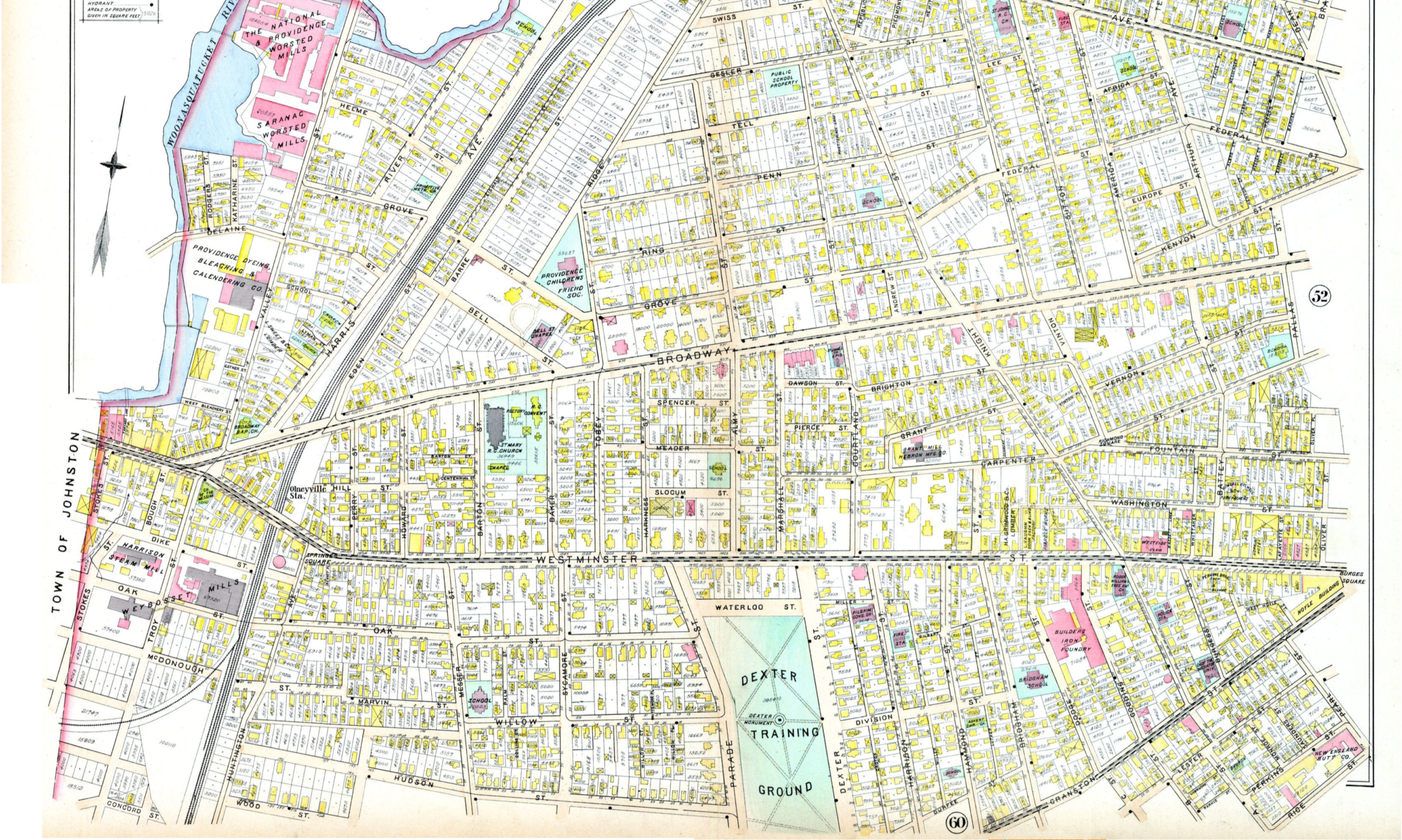By now you may have heard the news that the Pawtucket Red Sox have been purchased by a new ownership team, and those new owners have announced their interest in moving the team away from their longtime home at McCoy Stadium in Pawtucket. The owners have said they would like to build a new stadium in downtown Providence, on the land made available by the moving of I-195.
Here are the parcels under the jurisdiction of the 195 Commission. Orange parcels are still available, gray parcels have pending purchase & sale agreements, and green parcels are set aside for parks. The blue line is the proposed route for a streetcar line. If you click on the different parcels below, you can see more information about them.
The new owners have announced (and it has been proclaimed far and wide in the media) that they are interested in the West Side parcel abutting the river. It should be noted that this would be difficult, because displacing the public park that is planned for that parcel would require a revision of the authorizing legislation. Even more tricky, it would require equal area in the district to be set aside for a replacement public park.
While I believe the adjacent site (parcels 22 & 25) would be a better place for the stadium, that’s not my biggest concern. Downtown Providence has a parking problem already. Storing cars is a horrendously inefficient use of land, and downtown Providence, the core of our city, is overrun with surface lots and street-deadening garages. We should all be concerned by this PawSox news that it would result in acres and acres of new asphalt wasteland in a place that desperately deserves to be a welcoming environment to walk or bike in. Parking is necessary when you’re expecting lots of people to come to the place you’re building, but it is my hunch that plenty of parking already exists close to the proposed stadium site.
So, to that end, I went to Google Earth and started counting parking spaces. Parking that is within 800 feet of a destination is close by, within 1200 feet is a medium distance, and within 1600 feet is a long but tolerable walk. Of course, for some people 100 feet is a big barrier; that’s why handicap parking spaces & permits exist.
Parking in downtown Providence
All those lots total about 2800 spots within a short walk, 4050 within a medium walk, and 5100 spaces within a long-but-tolerable walk, plus four garages that I couldn’t find space counts for (plausibly 200-500 spaces on average). Let’s estimate that those four garages total 1000 spaces.
There are over 200 street segments within a short walk as well, totaling more than 10 miles of street length. Based on parking spaces 32 feet long and a GIS analysis of the width of those street segments, there is room for about 1400 spaces of on-street parking within a short walk of the proposed stadium location as well.
That means, all told, a reasonable estimate of existing parking close to the proposed stadium site is 7500 spaces including both on-street and off-street. Of course, many of these spaces are used for other purposes as well. And there is no guarantee that their owners would be willing to enter into shared-use agreements with the stadium ownership. However, the number is still twice the estimate cited in the ProJo last week for the number of parking spaces required to fill the stadium.
For comparison: McCoy Stadium parking
I keep reading "ample free parking" at McCoy. The few times I drove there, had to pay (reasonable amt) at a private lot 3 blocks away.
— Car Free in PVD (@carfreepvd) February 26, 2015
There are actually fewer spaces in parking lots around McCoy stadium than around the proposed site in downtown Providence. Within a short walk of the main gate (mostly on-site) there are only about 860 spaces, a medium walk will get you to 1220, and within a 1600 ft long walk, there are about 2400 spaces available in parking lots.
I don’t have the widths readily available for Pawtucket streets, so I assumed each street segment within 1600 feet of the stadium entrance was packed with cars along both sides of the street. Folks really love the PawSox. That would result in space for another 2400 cars, bringing the total parking capacity around McCoy stadium to about 5000 spaces.
In Conclusion
There’s a lot of parking in downtown Providence near the proposed stadium (7500 spaces by my count). It’s just also used for other things. I would encourage any owners of parking facilities downtown to contract with the stadium ownership for a shared-parking agreement. It would raise the economic tide for all of downtown.
The area around McCoy stadium, in contrast, has far fewer spaces; 5000 is a generous estimate. While the seas of asphalt around the stadium itself may be single-use (in other words, vacant and uninviting the rest of the time), about 4000 of those spaces are behind businesses, in hospital or school parking lots, or clogging both sides of residential streets with parked cars.
To look at it differently, McCoy Stadium has gotten along fine with no more than 1000 parking spaces on site. Any more than that (and perhaps any at all) built for a new stadium might be money better spent elsewhere.





